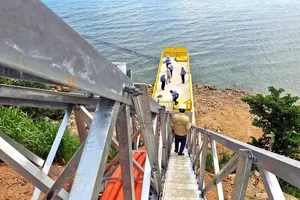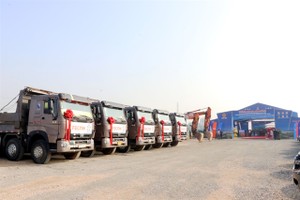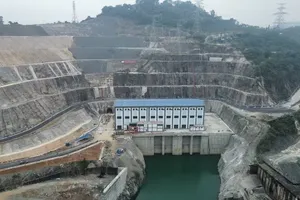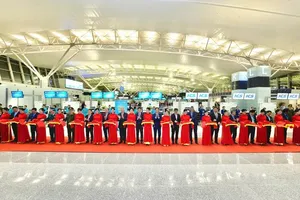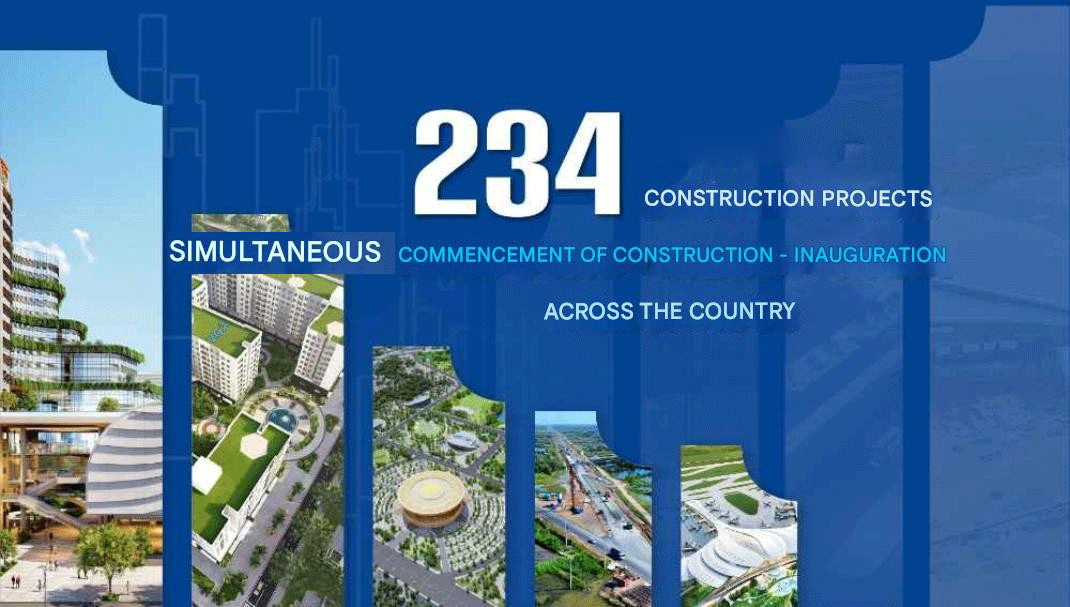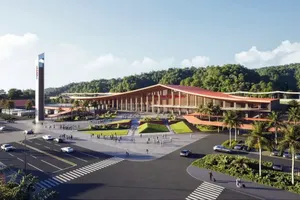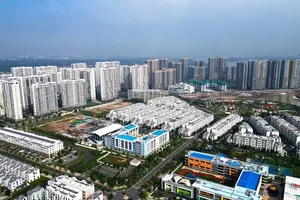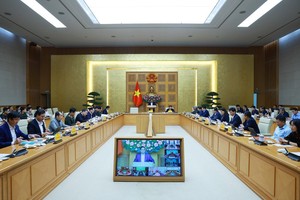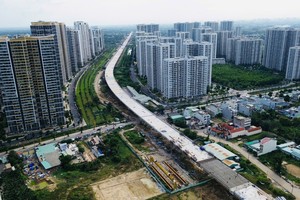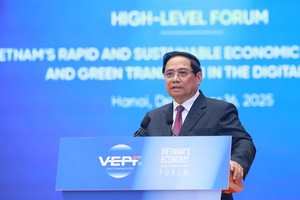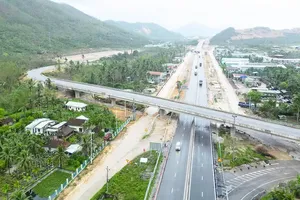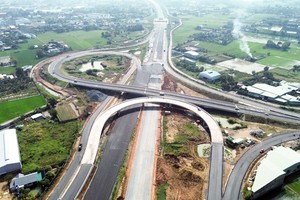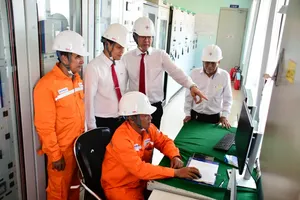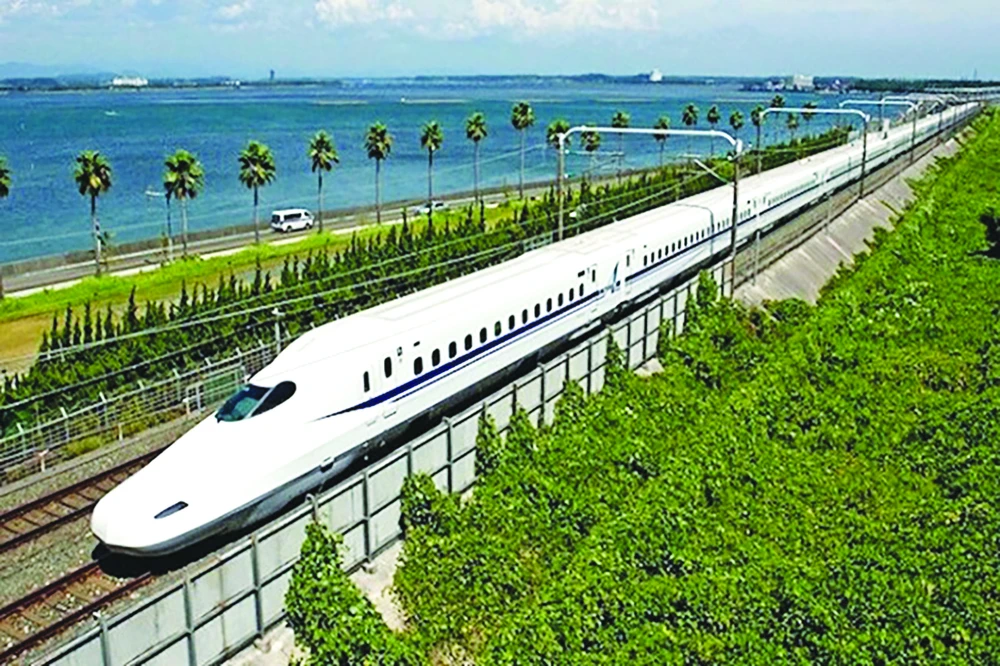
Moreover, the most significant benefit of the project is its potential to drive development for the entire economy.
Construction market valued at approximately $33.5 billion
According to Mr. Nguyen Ngoc Dong, former Deputy Minister of Transport, the direct and indirect economic benefits of the North-South high-speed railway project are substantial but cannot be quantified in terms of project revenue and financial efficiency. While the project may not recoup its costs independently, it can generate returns through broader socio-economic development.
Mr. Nguyen Van Phuc, former Deputy Chairman of the National Assembly's Economic Committee for the 14th term, also emphasized that the most crucial aspect of this project is its impact not only on the 20 localities along the route but also on the national economy as a whole.
With a project scale exceeding $67 billion, experts are hopeful that investing in the high-speed railway will establish a construction market valued at around $33.5 billion. If the national railway system and urban railways are included, the construction market could reach approximately $75.6 billion, with the market for vehicles and equipment valued at about $34.1 billion, resulting in millions of jobs.
Representatives of the Vietnam Association of Mechanical Industry noted that if the appropriate technology is transferred, Vietnam could master the construction industry, given the mentioned market scale. The country could also gradually localize the manufacturing of railcars, power supply systems, and information-signaling systems, as well as gain autonomy in operations, maintenance, and production of certain spare parts for high-speed railways. Learning from the experiences of countries that have successfully developed high-speed rail, it is essential to establish and implement a national program focused on human resources and the railway industry to prepare for investment and development.
Mr. Uong Viet Dung, Chief of Office at the Ministry of Transport, emphasized that this project will require a substantial workforce. It is estimated that around 180,000 workers will be needed for construction, approximately 13,880 for operations and management, about 700 for regulatory agencies, and roughly 1,200 consulting engineers. Additionally, millions of workers are expected to be employed in supporting industries and urban development along the route.
The project has already established a comprehensive training program for human resources, which includes three types of training: domestic training, international training, and a combination of both. The program encompasses four qualification levels, ranging from skilled workers and engineers to master's degree holders and PhDs. This trained workforce will support government regulatory agencies, project management units, operational and maintenance teams, as well as training and research institutions.
Developing a low-carbon economy
One of the significant advantages of the high-speed railway project is its alignment with the objectives of creating a sustainable, modern, and environmentally friendly transportation system, aiming to reduce traffic accidents, minimize environmental pollution, combat climate change, and enhance national defense and security.
Regarding safety, data from the Asian Development Bank indicates that traffic accidents in Vietnam result in annual losses equivalent to approximately 2.9 percent of the country's GDP. Once the high-speed railway project connecting the North and South becomes operational, it is expected to save costs associated with traffic accidents, amounting to about $849 million by 2040 and approximately $1.9 billion by 2050.

Additionally, the high-speed railway is regarded as a green transportation solution and an effective means for Vietnam to achieve its commitment to net-zero emissions by 2050. Research from the International Union of Railways shows that the environmental impact costs of high-speed rail are lower than those of other transportation methods. Specifically, carbon dioxide emissions from high-speed trains are 8.5 times lower than those from airplanes and 3.7 times lower than those from cars. The cost savings from reduced carbon dioxide emissions are projected to reach approximately $67 million by 2040 and around $172 million by 2050.
This mode of transportation also significantly conserves resources, occupying only one-third of the land required for road transport. To accommodate approximately 15,000 to 16,000 passengers per hour, a highway needs a width of about 75 meters, while the high-speed railway requires only around 25 meters. Furthermore, the high-speed rail system predominantly utilizes bridges and tunnels (about 70 percent of the route length), which effectively mitigates climate change impacts and minimizes community fragmentation.
Deputy Minister of Transport Nguyen Danh Huy emphasized that the high-speed railway, powered by electricity, is one of the optimal solutions for transforming transportation methods. This is particularly significant as Vietnam prioritizes developing a low-carbon economy and aims for net-zero emissions by 2050, as pledged at the COP26 Climate Change Summit.
The Vietnam Railways Corporation will be responsible for managing, operating, and utilizing the entire high-speed railway infrastructure. It will be entrusted with all vehicles and equipment necessary for operation and will bear the responsibility of repaying the investment costs for these assets. As per the plan, the corporation will establish two companies: one to manage and operate the infrastructure and the other to handle transport operations, utilizing the vehicles and equipment provided by the project for transport services.
